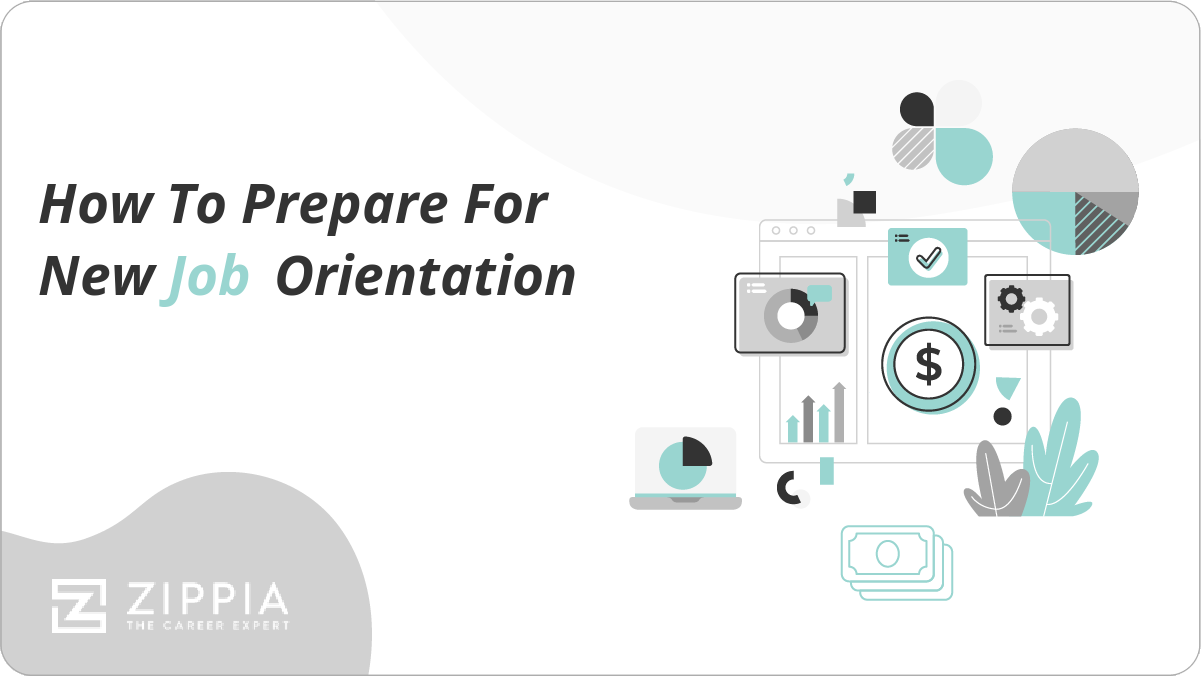- Office Etiquette
- Office Etiquette
- Dating A Coworker
- April Fools Pranks For Work
- How To Be A Good Employee
- Pet Peeves List
- How To Write A Project Proposal
- Qualities Of A Good Worker
- How To Get Along With Your Boss
- What Engaged Employees Do Differently
- What To Say Instead Of Sorry
- How To Send A Friendly Reminder Email
- How To End A Conversation
- Sorry For The Delay
- Tattoos In The Workplace
- Sorry For The Late Reply
- How To Respond To A Compliment
- New Employee
- How To Introduce Yourself Professionally
- Welcome New Employee Announcement
- Welcome Letter
- Thank You Note To Colleague
- 30/60/90 Plan
- Getting To Know You Questions
- Job Satisfaction
- Team Building Activities
- At Will Employment
- Company Culture
- Corporate Culture
- How To Succeed At Your New Remote Job
- How To Prepare For New Job Orientation
- How To Create An Employee Handbook
- Hostile Work Environment
- Hostile Work Environment
- How To Deal With A Difficult Coworker
- What Is Human Resource Development (HRD)?
- I Hate My Job
- Burnt Out At Work
- Condescending Coworker
- Sexual Harassment In The Workplace
- Work Environment
- My Job Sucks
- Favoritism At Work
- Respect In The Workplace
- Wagner Act
- Documentation In The Workplace
- Unconscious Bias
- Ageism
- What To Do When You Feel Unappreciated At Work
- How To Respond To A Warning At Work
- How To Deal With A Passive Aggressive Coworker
- What To Do When You're Unhappy At Work
- I Hate My Boss
- Gaslighting Boss
- Signs You're Underpaid
- Insubordination At Work
- Missing Work
- Communicating
- Send Retirement Wishes
- Write A Congratulations Email
- Professional Voicemail Greeting Examples
- Made A Mistake At Work
- Google Tricks
- Appeal Letter
- Employee Morale
- How To Write A Professional Email
- Out Of Office Message
- Small Group Icebreakers
- Memo Format
- Memo Examples
- Cell Phone At Work
- Meeting Minutes
- Communication Barriers
- How To Take Notes
- How To Brainstorm
- Ask For A Mental Health Day
- Transfer Request Letter And Email Examples
- How To Write A Business Proposal
- How To Deal With A Lazy Coworker
- How To Write A Rejection Letter
- How To Say No
- Scheduling
- Personal Goals
Find a Job You Really Want In
New job orientations can be just as nerve-racking as the interview process. It’s important to prepare for a new job interview to make the best first impression to your new coworkers.
We will go over how to prepare for your new job orientation, why it’s important to have orientation, and what to expect during your first day.
Key Takeaways:
-
The length of orientation for new employees typically ranges from one day to one week depending on the position and job description.
-
Job orientations help introduce new employees to their role and workday responsibilities, train them on company policies, and get them acclimated to their new work environment.
-
Before coming in to do orientation it is important to do your research and be prepared.
-
Arrive on time, dress appropriately and have a positive attitude is the best way to make your orientation successful.

How to Prepare for the First Day of Orientation
If you prepare accordingly, your job orientation will be a breeze and you’ll easily set yourself up for success in your new career. Just as you would prepare for a job interview, there are a few important steps you should take to effectively prepare for an employee orientation program.
Here are some of the most efficient ways to prepare for new employee onboarding and training sessions.
-
Do your research and be prepared. Just as you would research and prepare for a job interview, you should also research and prepare for a new job orientation. New employee training is still part of the hiring and onboarding process, so it’s important to put your best self forward.
Throughout the training process, you’ll likely be interacting with coworkers and supervisors. To prepare for these interactions and intelligently answer the questions they may ask, it may be a good idea to research the 50 most common interview questions to get some insight on how you should answer such questions.
-
Call ahead to confirm. Before heading out the door to go to your new employee job orientation, it’s a good idea to confirm the details with your new supervisor or a company human resources representative.
Call at least a few days ahead of your scheduled training to confirm the details. This is also a good time to ask about the dress code and anything you’re required to bring along to the orientation.
-
Dress appropriately. This is a big one. Make sure you make a good impression and dress professionally, just as you would for a job interview.
What, exactly, you should wear depends, of course, on the industry and job, but, as a general rule of thumb, it’s always better to dress more professionally than casually.
What you wear to your job orientation and during your first few weeks of employment will be the first impression your supervisor, co-workers, and potential clients get of you.
-
Arrive on time. Arriving on time to work is always important, but it’s even more vital on your first day of work. During your new employee orientation, always make sure you arrive on time. Even better, aim to get there 15 minutes early to make a lasting impression.
Newly hired employees should always arrive on time, or early, throughout the onboarding process. Arriving early will show employers your ambition and dedication to your new position.
-
Put your phone on silent. This one’s a no-brainer. It’s important to turn off any distractions and be fully present during your job orientation and the first days and weeks of your new job.
-
Have a positive attitude. Having a positive attitude will show your ambition and drive. Being positive and upbeat will show your co-workers and supervisors that you have a strong work ethic and are approachable and easy to work with.
-
Ask questions. One of the most important things you can do for yourself during your new job orientation is to ask lots of questions. Whether it’s about your salary, daily responsibilities, a benefits package, or work schedule, you should leave your orientation with a clear grasp on all aspects of your new job.
Job orientations are designed to teach you about your new role and the company you now work for. Asking questions and clearing up any confusion you may have is an important part of acclimating to your new work environment and smoothly transitioning into your career.
-
Interact with co-workers. Job orientations are your first opportunity to interact with co-workers. Use this to your advantage by making a good first impression on those you work with. This will help foster a smooth transition and good professional relationships.
-
Be open to new things. Sometimes an employee orientation will put you in a situation where you may have to try new things. Whether that’s an ice-breaker with other new hires or an on-the-spot group interview or presentation, it’s important to embrace these experiences and be open to new things.
Being open to new things during your employee onboarding and orientation will set the tone for your first few months as a new hire. When you’re open to new things you’ll stand out among new hires and make a great impression on your co-workers and supervisor.
-
Just be yourself. Assuming you found a job that fosters and rewards diversity, this shouldn’t be too hard. Employers love to see newcomers being genuine and real in their work environment.
You were hired for your skills and experiences, and now, during the orientation and onboarding process, it’s your opportunity to let your personality shine.
Since you’ll likely be at work for eight hours a day, five days a week, it’s important that you feel comfortable in your workplace and be yourself around your co-workers and supervisors. Being yourself will make your orientation and first days of employment much easier.
The Purpose of New Employee Training
Job orientations serve to introduce new employees to their role and workday responsibilities, train them on company policies, and get them acclimated to their new work environment.
During new employee training sessions, supervisors or training coordinators will typically review employee resources and expectations, discuss the company culture, and introduce new employees to important company policies.
This onboarding process serves to welcome newly-hired employees.
In summary, attending a new job orientation will teach you about your work responsibilities and workplace environment and help set you off on the right foot, helping to avoid the likelihood of quitting a job you just started.
What to Expect at New Employee Orientation
Depending on the kind of role you’ve accepted, the industry you’re working in, and the location of your new job, new employee orientation will differ from career to career. In general, new employees can expect an introduction to their new job, workplace, and co-workers.
Depending on the job, the size of the company, and the number of new hires, the orientation may be in a group setting or conducted individually. It can be either formal or more laid back.
-
Before orientation:
-
Before attending a job orientation it’s always a good idea to ask your new employer about the structure of the mandatory training so you know what you’ll be walking into.
-
Before your new employee orientation, you will typically receive a welcome letter from your new employer with information on what to expect on your first day and, sometimes, onboarding paperwork. This new employee welcome message will help further prepare you for your first day.
-
-
During Orientation:
-
New employee orientation is the most common type of workplace training. Newcomers are usually taken on a tour of their workplace and introduced to co-workers and staff members. Supervisors will typically train new employees on basic procedures, like dress codes, clocking in and clocking out, and where to put your belongings.
-
Employers will almost always discuss the company’s mission and core values during new employee orientation. For a new hire, this is a great opportunity to get a good grasp on how the company functions and what the work culture is like.
-
On day one of orientation, new employees may also learn about the company’s benefits enrollment process and have in-depth discussions on their salary, work expectations, required hours, and any perks available to employees.
-
This is the perfect chance for new hires to ask any questions or address any concerns they may have about their new job.
-
During orientation, newcomers can expect to fill out various tax documents and new employee paperwork. Don’t be surprised if you’re fingerprinted, or if a background check is performed. These are widely used screening tactics at new job orientations.
-
The new hire process is designed to bring hired employees up-to-speed with the new position and company which they’re now employed with.
-
-
After Orientation:
-
After completing the orientation process, the new team member will likely receive an employer identification card, and might even be matched with a staff mentor to help them transition into their new role.
-
Upon completing your orientation and required pre-employment training, most employers will send an email announcement welcoming you to the team, which will help to ease the transition for all parties.
-
Your Orientation Checklist
To squash your nerves and be comfortable and confident during your first day of new employee orientation, it’s important to be well prepared.
Bring a notebook and a pen, so you can write down pertinent information and fill out any necessary documents, and a snack and a jacket to keep you relaxed for the duration of the job orientation.
Most importantly, be sure to bring all the necessary paperwork — this can include your ID card, social security card, payroll-tax forms and information, any required certifications, like an OSHA certificate, copies of your college diploma, and copies of your resume.
If your employer requires specific paperwork, they’ll usually let you know in your welcome letter, which you’ll receive before attending orientation, but it’s always a good idea to double-check with a company human resource representative.
New Job Orientation FAQ
-
How long is orientation and new hire training?
The length of orientation for new employees typically ranges from one day to one week but possibly much longer depending on the job and professional industry. More difficult, highly-technical jobs typically have longer onboarding processes and orientation periods.
For example, becoming a US diplomat or foreign service officer requires accepted applicants to attend a six-week orientation program to familiarize them with the State Department and their new roles and responsibilities.
-
Do you get paid for your new job orientation?
Yes, you typically get paid for new job orientation. New hire orientation is usually held during normal work hours, is mandatory and is related to your position so the employers are required to pay you during this time.
-
Does a job orientation mean you’re hired?
A job orientation does not always mean you got the job. This means you have been selected to come in and see the facility and work. If you have not had any notice that you have been hired, contact HR to see the status of the application.
Most of the time when you do orientation, it is the final step in the hiring process and at the end of orientation you will fill out the proper paperwork to be hired.
Final Thoughts
Starting a new job can be stressful, but, with these tips, it doesn’t have to be.
Preparing for a new job orientation will set you up for long-term success in your new role. By making a good first impression, interacting with co-workers, having a positive attitude, and being open to new things, you’ll easily get through the training and employee onboarding procedures and smoothly transition into your new role.
Asking questions and fully taking advantage of the staff orientation will set you off running in your new position.
After completing the employee orientation program, you’ll be up-to-speed on company policies and have a complete and thorough understanding of your job responsibilities, employee benefits, and workplace culture and environment.
- Office Etiquette
- Office Etiquette
- Dating A Coworker
- April Fools Pranks For Work
- How To Be A Good Employee
- Pet Peeves List
- How To Write A Project Proposal
- Qualities Of A Good Worker
- How To Get Along With Your Boss
- What Engaged Employees Do Differently
- What To Say Instead Of Sorry
- How To Send A Friendly Reminder Email
- How To End A Conversation
- Sorry For The Delay
- Tattoos In The Workplace
- Sorry For The Late Reply
- How To Respond To A Compliment
- New Employee
- How To Introduce Yourself Professionally
- Welcome New Employee Announcement
- Welcome Letter
- Thank You Note To Colleague
- 30/60/90 Plan
- Getting To Know You Questions
- Job Satisfaction
- Team Building Activities
- At Will Employment
- Company Culture
- Corporate Culture
- How To Succeed At Your New Remote Job
- How To Prepare For New Job Orientation
- How To Create An Employee Handbook
- Hostile Work Environment
- Hostile Work Environment
- How To Deal With A Difficult Coworker
- What Is Human Resource Development (HRD)?
- I Hate My Job
- Burnt Out At Work
- Condescending Coworker
- Sexual Harassment In The Workplace
- Work Environment
- My Job Sucks
- Favoritism At Work
- Respect In The Workplace
- Wagner Act
- Documentation In The Workplace
- Unconscious Bias
- Ageism
- What To Do When You Feel Unappreciated At Work
- How To Respond To A Warning At Work
- How To Deal With A Passive Aggressive Coworker
- What To Do When You're Unhappy At Work
- I Hate My Boss
- Gaslighting Boss
- Signs You're Underpaid
- Insubordination At Work
- Missing Work
- Communicating
- Send Retirement Wishes
- Write A Congratulations Email
- Professional Voicemail Greeting Examples
- Made A Mistake At Work
- Google Tricks
- Appeal Letter
- Employee Morale
- How To Write A Professional Email
- Out Of Office Message
- Small Group Icebreakers
- Memo Format
- Memo Examples
- Cell Phone At Work
- Meeting Minutes
- Communication Barriers
- How To Take Notes
- How To Brainstorm
- Ask For A Mental Health Day
- Transfer Request Letter And Email Examples
- How To Write A Business Proposal
- How To Deal With A Lazy Coworker
- How To Write A Rejection Letter
- How To Say No
- Scheduling
- Personal Goals





